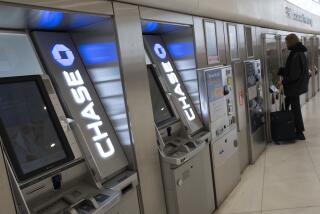Sweeping Overhaul of Bank System Offered
- Share via
WASHINGTON — The Bush Administration today proposed a landmark overhaul of the nation’s banking system, affecting nearly every American who borrows and saves.
The recommendations, the centerpiece of President Bush’s domestic agenda, would reduce government guarantees to depositors and break down traditional walls between banks and other businesses. They are the Administration’s response to a rising tide of bank failures unrivaled since the Depression.
Prepared by the Treasury Department after 18 months of study, the package would put the financial system through the biggest changes in 50 years.
For the first time since the establishment of federal deposit insurance in 1934, government guarantees to bank customers would shrink rather than expand. The changes, however, are carefully crafted to minimize their impact on average depositors.
Individual depositors would be covered for no more than $200,000 per institution, eliminating exotic combinations of trust and joint accounts that now enable families to insure more than $1 million. Moreover, regulators would be discouraged from fully reimbursing uninsured deposits, which they have done so far in virtually all bank failures.
Longstanding laws barring commercial and industrial companies from owning banks would crumble, as would the division of banking from the insurance and securities industries.
The long-awaited proposals must be approved by Congress, where many legislators are wary of repeating mistakes that worsened the savings and loan crisis.
Treasury Secretary Nicholas F. Brady, however, said the reforms are a package and should not be enacted piecemeal.
“Today, our banking system is under stress. . . . Our banks are hampered by out-of-date laws,” Brady said.
He said American banks compare unfavorably with their healthier and bigger counterparts in other industrial countries. He noted that only one bank, Citicorp, ranks among the world’s 30 largest, compared to nine U.S. banks in that grouping 20 years ago.
More to Read
Sign up for Essential California
The most important California stories and recommendations in your inbox every morning.
You may occasionally receive promotional content from the Los Angeles Times.













